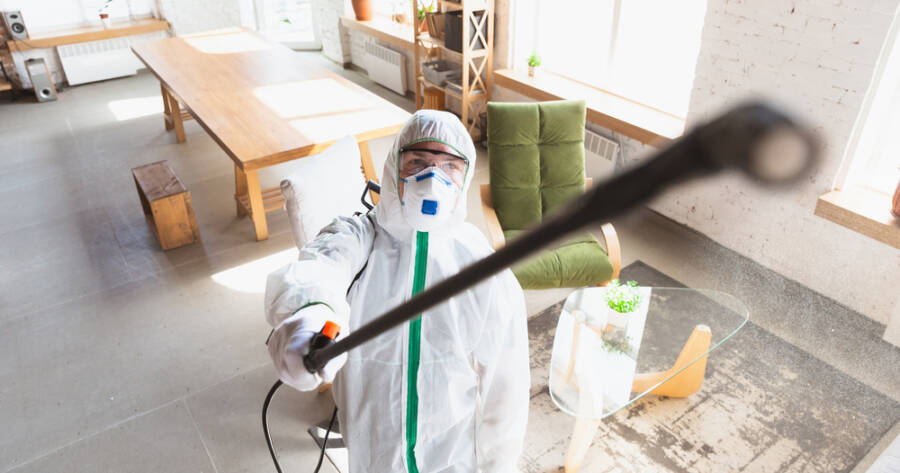When mold appears in your home, the terms “removal” and “remediation” are often used interchangeably—but they actually describe very different processes. Mold removal focuses on cleaning or eliminating visible growth, while remediation addresses the underlying causes to prevent it from returning. Understanding the distinction is essential for protecting both your property and your health. By identifying which approach your situation truly requires, you can ensure a safer, longer-lasting solution to indoor mold problems.
What Is Mold Removal?
When dealing with mold in a home or commercial setting, it’s essential to understand the difference between mold removal and remediation. Mold removal refers to eliminating mold from an environment, which is technically impossible because mold spores are present nearly everywhere.
While mold removal services won’t eliminate the spores entirely, they can drastically reduce the threat of ill-health.
What Is Mold Remediation?
Mold remediation involves reducing mold levels to a safe, natural state by addressing the underlying moisture issues and preventing future growth. Remediation is a systematic process that includes several steps.
These steps typically involve an initial inspection, mold containment, air filtration, and the removal and cleaning of mold-infested materials. Professionals use specialized techniques, such as anti-microbial treatments and air filtration systems like HEPA filters, to capture mold spores and improve air quality during the process.
Considerations for Reliable Mold Removal Services
Choosing a reliable mold removal company requires careful consideration of the company’s qualifications and adherence to industry standards. It’s important to verify the professionals’ experience, training, and state-specific certifications to ensure they meet local regulatory requirements. Licensed mold remediation companies usually follow guidance from organizations like the Environmental Protection Agency (EPA), the American Conference of Governmental Industrial Hygienists (ACGIH), and the Institute of Inspection, Cleaning and Restoration Certification (IICRC).
For larger mold problems or where there is significant water damage, hiring experienced professionals is advisable. They should also have the capacity to handle airborne spores using air scrubbers and HEPA vacuums, and should offer tailored solutions for specific mold issues, whether residential or commercial.
Importance of Professional Mold Inspection
Mold inspection is a critical first step in tackling mold issues. Professionals use advanced tools like infrared cameras and moisture meters to detect hidden mold colonies and underlying moisture problems. This comprehensive inspection helps identify the full extent of the infestation and informs the creation of an effective remediation plan to address all affected areas.
The EPA highlights that while testing for mold can be done, a visual inspection is often more useful. This is mainly because there are no established standards for acceptable mold levels, making testing results sometimes inconclusive. Instead, identifying moisture sources and potential water damage through inspection is critical for long-term solutions.
Steps in the Mold Remediation Process
The mold remediation process often begins with containing the affected area to prevent mold spores from spreading. Techniques such as erecting barriers and using negative air pressure are common in preventing contamination. Following containment, air filtration processes are used to purify the air, ensuring any loose spores are captured for improved health and safety.
Next, the actual removal of mold-infested materials commences. These may include drywall, insulation, or carpeting, which are prone to mold colonization. Professionals apply anti-microbial treatments to ensure that areas are effectively sanitized and less susceptible to future growth. The process concludes with restoration work, which includes repairing and rebuilding structures that were compromised during the infestation. Finally, preventive measures such as improving ventilation and sealing leaks help ensure that mold does not return.
Does Your Space Have Mold?
Understanding the importance of mold removal and the intricacies involved in choosing a reliable remediation service is critical for maintaining a healthy living or work environment. Proper mold remediation not only addresses existing mold issues but also provides long-term solutions to prevent reoccurrence by identifying and fixing moisture problems. Knowledge about these procedures empowers property owners to make informed decisions and select reputable services that adhere to industry standards.
By learning more about mold remediation, individuals can protect their property value, preserve air quality, and ensure the safety of occupants. The right professionals can deliver comprehensive services based on proven methods and principles. Ensuring that the chosen company follows best practices in mold mitigation will lead to effective and lasting outcomes.
